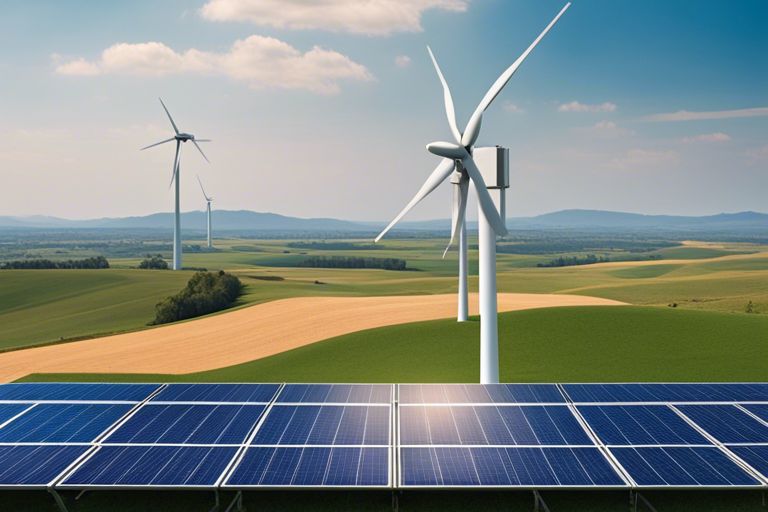It’s a dilemma that many environmental enthusiasts and policy makers face: when it comes to renewable energy sources, should we put our faith in wind turbines or solar panels? Both technologies have their strengths and weaknesses, but which one truly holds the key to a sustainable energy future? In this article, we will investigate into the intricacies of wind turbines and solar panels, exploring their efficiency, cost-effectiveness, and environmental impact to determine which option comes out on top.

Environmental Impact
Carbon Footprint of Wind Turbines
Impact: Wind turbines have a relatively low carbon footprint compared to traditional fossil fuel energy sources. The manufacturing and installation process of a wind turbine produces some carbon emissions, but these are quickly offset by the clean, renewable energy they generate throughout their lifespan.
Carbon Footprint of Solar Panels
The carbon footprint of solar panels is also lower than that of fossil fuels, with the manufacturing process accounting for the majority of emissions. However, as technology improves and production becomes more efficient, the carbon footprint of solar panels continues to decrease over time.
Footprint
: Additionally, solar panels offer a unique advantage – they generate electricity without producing any emissions once they are up and running. This means that the initial carbon investment in manufacturing is quickly outweighed by the clean energy they produce over their lifetime.

Energy Generation and Efficiency
Capacity Factor of Wind Turbines
One key factor in determining the efficiency of wind turbines is their capacity factor. This factor represents the actual energy output of the turbine compared to its maximum potential output. Wind turbines typically have a capacity factor ranging from 30% to 40%, depending on factors like wind speed and turbine design.
Capacity Factor of Solar Panels
For solar panels, the capacity factor is a crucial metric that denotes the efficiency of converting sunlight into electricity. Solar panels have a capacity factor of around 20% to 25%, as they can only generate electricity during daylight hours and are affected by factors like cloud cover and angle of sunlight.
Energy generation from solar panels also varies depending on geographical location and weather conditions. Areas with more sunlight and clear skies will have higher energy generation potential from solar panels compared to regions with frequent cloud cover or limited sunlight.

Cost and Practicality
Initial Investment and Maintenance Costs of Wind Turbines
Some may argue that the initial investment for wind turbines can be higher than that of solar panels. However, the maintenance costs are relatively low, making them a cost-effective choice in the long run.
Initial Investment and Maintenance Costs of Solar Panels
Investment in solar panels may seem more affordable upfront compared to wind turbines. However, maintenance costs for solar panels can add up over time, affecting their overall cost-effectiveness.
Costs associated with solar panels may include cleaning, repairs, and replacement of inverters or batteries, depending on the system’s complexity. These additional expenses should be factored in when considering the overall cost of solar energy.
Final Words
Summing up the debate between wind turbines and solar panels, it is clear that both options have their advantages and disadvantages. While wind turbines can generate more energy in certain locations, solar panels offer more flexibility in installation and can be more aesthetically appealing. Ultimately, the best option depends on various factors such as location, energy needs, and environmental considerations. Embracing a combination of both technologies may be the key to achieving a sustainable energy future.
